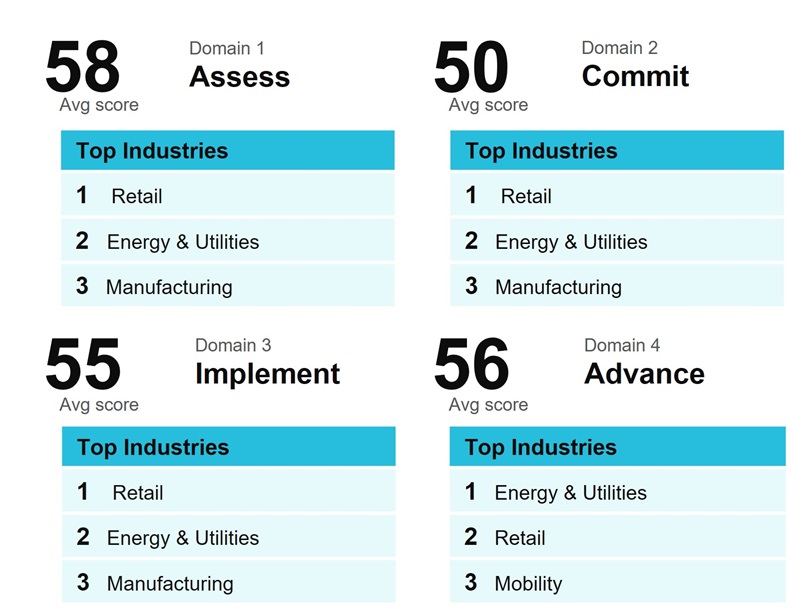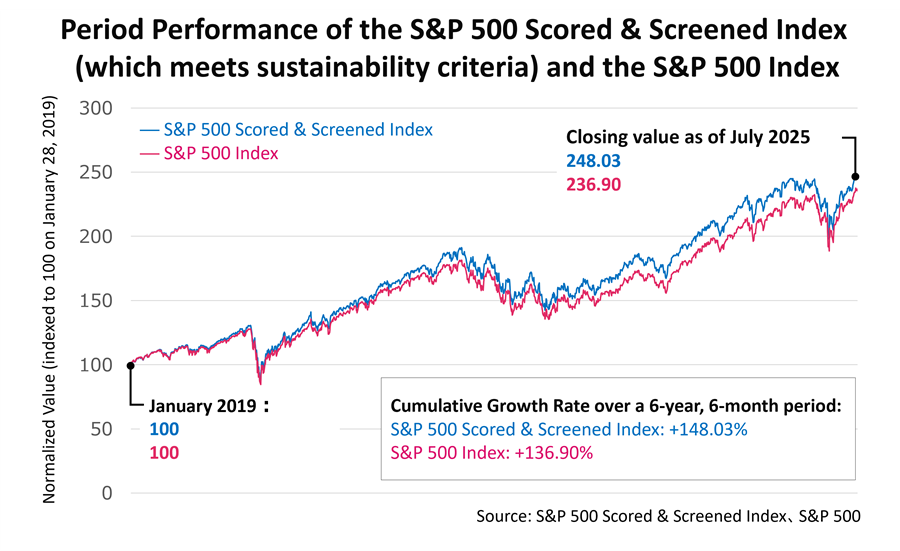Net Positive: The New Metric for Business Success

Article | 2025-8-25
10 minute read
Net Positive is a new management strategy where companies actively strive to turn their impact on society and the environment into a positive one. This article thoroughly explains the differences from Net Zero, the five steps companies can take to achieve Net Positive, and case studies.
How does your company measure success? Is it through revenue, profit margins, and shareholder value? And what drives these metrics? Ultimately, it’s how customers perceive you, how employees believe in what you do, and how confident investors are in your future. In other words, success hinges on your relevance to the people who matter most. And that relevance increasingly depends on the positive impact you make as an organization.
That’s where Net Positive comes in. It’s a business approach where companies not only aim to minimize their social and environmental footprint, but also actively create a positive handprint—or impact—that contributes to long-term sustainability and the well-being of people and the planet. Businesses that adopt a Net Positive mindset strengthen their long-term resilience by building trust, inspiring loyalty, and fostering innovation. The simple fact is, as Paul Polman, former CEO of Unilever, said during the World Economic Forum 2025, "Companies with a strong purpose, long-term vision, and stakeholder focus perform better."
The Tangible Business Benefits of Net Positive
But you don’t have to take word of evangelists like Paul Polman.
Fujitsu's Net Positive Index, researched and developed by Economist Impact has found that companies committed to Net Positive principles are more likely to meet revenue and profit goals, earn investor confidence, and adapt to changing regulations. These businesses also outperform in resilience, staying relevant in the face of shifting consumer expectations and climate risks.
Of the five industry sectors measured by the Advancing Net Positive Agenda, the retail sector was ahead, perhaps reflecting the growing desire from consumers to buy from companies that show positive values.

This trend is also evident from the rise of ESG (Environmental, Social, and Governance) investing. For instance, the S&P 500 Scored & Screened Index, which selects companies with high ESG scores from the S&P 500, has outperformed the S&P 500 Index by approximately 11% over the period from January 28, 2019, to July 9, 2025.

Yet, for many, this is uncharted territory. The average company scores only 55/100 on the Net Positive Index, with no industry achieving “Leader” status. Most focus on doing the minimum they need to meet compliance obligations, rather than seeing the business opportunity.
Net Positive isn’t just the right thing to do—it’s a smart business strategy. What’s more, the research implies that there is an opportunity for any organization to be a leader in this space. Companies that embrace a net positive mindset will stand out – and thrive.
Steps to Becoming Net Positive
Many companies already strive for Net Zero—minimizing their environmental impact by reducing emissions and waste. While these efforts are important, they focus primarily on reducing harm. Net Positive takes it a step further: it’s about leaving the world better than you found it.
A Net Positive company creates a handprint that outweighs its footprint. For instance, rather than merely cutting emissions, a Net Positive business might generate renewable energy for local communities or invest in initiatives that enhance education and well-being. This shift from harm reduction to meaningful contribution is what sets Net Positive businesses apart—and ensures they thrive in an increasingly volatile and competitive landscape.
Five Transformative Shifts for a Net Positive Mindset
The next question is: where do you start? Many organizations already have the basic pieces in place, but to move forward requires a change in mindset and approach. Here are five clear principles to guide your journey:
Where would it be most effective for your company to begin making shifts?
1. From Reduction to Contribution: A New Perspective on Sustainability
Sustainability efforts typically focus on reducing harm: cutting emissions, eliminating waste, or conserving energy. A net positive company will evolve into proactive contributions, by considering how sustainability can make a difference to business performance. For example, Schneider Electric accelerated its digital and sustainability journey with Fujitsu to deliver the world’s then largest ServiceNow ITOM deployment. Coupled with a single glass view of IT, they achieved 90% ticket accuracy, with a 50% reduction in incident resolution time within the first year.
The research shows that companies are more likely to set goals for harm reduction than for contributions. Shifting this imbalance requires organizations to actively ask: How can we leave a lasting positive impact?
Action: Articulate the social challenges your company can help address through its products and services, and establish specific objectives.
2. From Cost to Value Creation: Turning Sustainability into Growth
Sustainability should not be seen as a financial burden but as an opportunity to generate new value. By contributing to environmental and social well-being, businesses can unlock new revenue streams, enhance customer loyalty, and improve operational efficiency.
For example, Toridoll Holdings , a Japanese company that manages restaurants including the Marugame Udon chain, has implemented an AI demand forecast service system to reduce food loss and optimize energy consumption. This system enables precise predictions of customer numbers, allowing for better adjustment of ingredient preparation and ordering quantities. As a result, the company minimizes food loss while improving operational efficiency and reducing environmental impact. Furthermore, by dynamically adjusting electricity and water usage in real time, it lowers energy costs and moves toward more sustainable business practices.
Consumer purchasing behavior also corroborates this shift. According to research by McKinsey and NielsenIQ, consumer goods that emphasize ESG principles saw a growth rate of 28% between 2017 and 2022, significantly outperforming the 20% growth of products that do not highlight such principles.
By adopting this Net Positive mindset, companies can view sustainability not as a constraint but as a growth opportunity, achieving both environmental benefits and business success while strengthening their competitive edge.
Action: Reframe sustainability as an 'investment' rather than a 'cost,' and utilize this perspective to foster new business models and enhance current business activities.
3. From Individual Responsibility to Whole Value Chain Accountability
True Net Positive impact requires addressing the entire value chain—from suppliers to end users. Businesses take responsibility not only their operations but understand that the practices of their partners and the behaviors of their customers also contribute to their overall impact. Collaboration with communities, governments, and stakeholders enables organizations is key to understanding this.

This is not easy. Barriers such as supply chain inefficiencies and conflicting regulations persist.
Innovative solutions, like AI-powered analytics, can help businesses address these challenges and drive sustainable practices across their ecosystems.
Action: Enhance cooperation with suppliers, aiming to source low-environmental-impact materials and achieve ethical working environments.
4. From Short-Term Goals to a Long-Term Vision: The Foundation for Sustainable Growth
In a fast-paced world, short-term profitability is often prioritized over longer-term investments and commitments. A Net Positive mindset recognizes that by prioritizing enduring impact over immediate gains or loss avoidance, is more effective to secure long term resilience and a sustainable business. Companies that take a long-term view are better equipped to adapt to market changes, regulatory shifts, and evolving stakeholder expectations.
As Paul Polman put it plainly, “Most of the value creation in companies happens five years out, not in quarterly results.” Shifting the focus to long-term sustainability unlocks resilience and ensures relevance for years to come.
Action: Establish a sustainability strategy that incorporates a long-term vision, predicting upcoming market needs and evolving societal landscapes.
5. From Isolated Efforts to Stakeholder Co-creation
Net Positive companies understand that transformative change isn’t achieved alone. They engage deeply with stakeholders to set and achieve shared goals. By co-creating solutions with communities, governments, and value chain partners, businesses foster trust, alignment, and lasting impact.
Employee engagement is also closely linked to sustainability. Analyses from Oxford University and Harvard University indicate that companies with higher employee well-being scores tend to exhibit stronger corporate performance in terms of profit margins, return on assets, and enterprise value.
Source: University of Oxford WRC
Collaboration also ensures that sustainability efforts are inclusive and address the needs of all stakeholders. This shared ownership drives systemic change, making businesses more resilient and impactful.
Action: Foster stronger partnerships with local communities, actively developing programs that help resolve their specific challenges.
Supercharging your Net Positive journey with technology
Supercharging your Net Positive journey with technology
Achieving Net Positive at scale demands innovation—and technology is the driving force that makes it possible. AI, quantum computing, and cloud platforms enable businesses to reduce waste, optimize processes, and amplify their impact with unprecedented precision.
For example, AI-driven analytics can identify inefficiencies in supply chains, reducing emissions and costs. Quantum computing accelerates breakthroughs in sustainable materials, while cloud computing enables transparency and collaboration across value chains. Companies that embrace these technologies will lead the way in transforming industries and delivering long-term value for society and the planet.
Starting your Net Positive discovery
Are you ready to explore where your organization stands—and where it could go? The Net Positive Assessment Tool offers a quick diagnostic to benchmark your performance against industry peers and competitors. It also provides actionable insights to help you take the next step, whether that’s improving data collection, setting performance baselines, or fostering better partnerships.
Net Positive isn’t just a buzzword—it’s about building a stronger, more admired business by making the world better. At its core, Net Positive is about people: employees who want meaningful work, communities that expect responsible leadership, and customers who reward companies that align with their values.
As Paul Polman noted, "If you stick to the world, the world sticks to you." This simple principle underscores the opportunity for businesses to thrive by creating solutions instead of problems. By moving beyond harm reduction and embracing active contribution, your organization can build trust, resilience, and long-term relevance.
The time to act is now. Start your Net Positive journey today—and build a future where your success and the planet’s well-being go hand in hand.
Net Positive Action Checklist
・ Setting Sustainability Goals
Has your organization set sustainability goals for the next 5-10 years in areas such as environmental impact (e.g., net zero, reduced water usage) and employee welfare (e.g., gender equality, living wages)?
・ Concrete Sustainability Initiatives
Are you implementing initiatives across your entire value chain to improve social and environmental impact, such as reducing environmental footprint (e.g., energy efficiency) and ensuring transparency (e.g., anti-bribery measures)?
・ Leveraging Technology and Data
Over the past two years, have you utilized technology to reduce waste or GHG emissions, or used data to achieve sustainability goals, such as incorporating environmental impact into evaluation criteria during implementation?
Curious about your company's net positive maturity? Discover where you stand by trying the 'Net Positive Assessment Tool' now.
Source
Are you Net Positive ready?
Discover how your organization is advancing toward a thriving, Net Positive future.


Related Information
Advancing Net Positive - Driving Profit with Purpose

